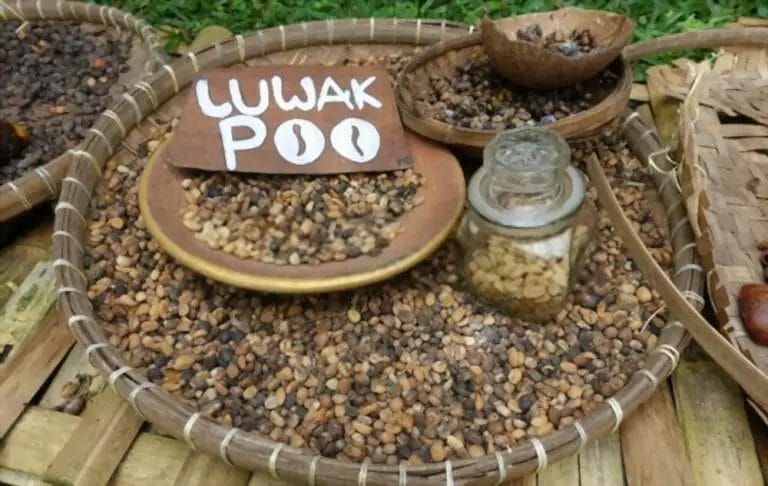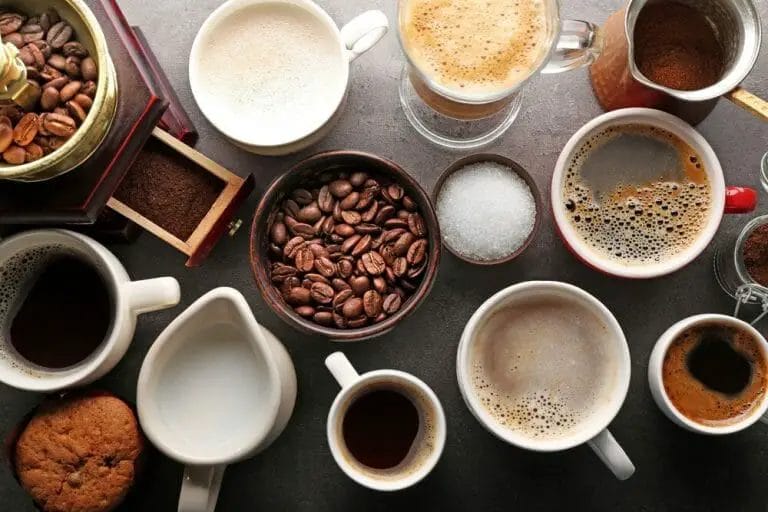How To Use Stovetop Espresso Maker Or Moka Pot?
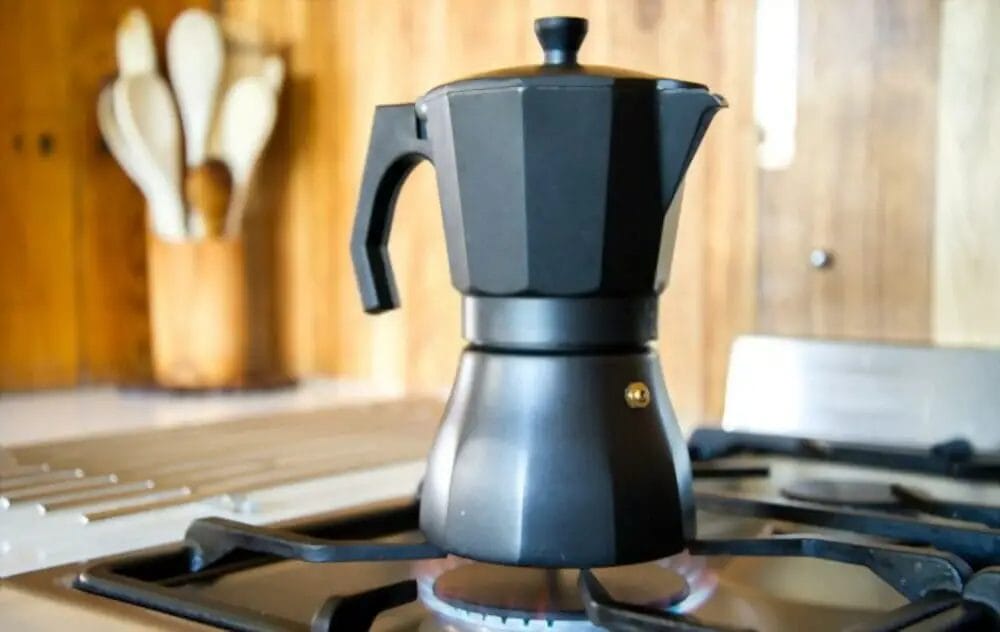
Who said you need a top-of-the-line espresso maker to make great coffee?
If you’re not into the pricey things, consider getting your caffeine fix with a different type of coffee maker.
This one is made specifically for people who want to brew a quick cup of coffee, not make endless cups all day.
The stovetop espresso maker is a real-life saver when your partner wants a cup before work, or you need an early morning hit to get you going.
It’s also perfect if you don’t have much space in the kitchen, and it doesn’t need electricity.
Many people wonder and ask how to use a stovetop espresso maker or Moka pot?
Unlike the electric version, this coffee maker uses water and ground coffee to produce an incredibly delicious cup of coffee. It’s easy to operate and takes only a few minutes to prepare.
This device is also known as a “Stovetop Espresso Maker” or “Moka Pot” and it’s built to brew delicious Italian coffee. It was designed for the homes of Italy, where having a rich and robust cup of coffee was considered a priority.
Here, we will discuss How to Use a Stovetop Espresso Maker, Caffeine Levels in Stove Top Espresso Coffee, How to Clean a Stovetop Espresso Maker, Best Stovetop Espresso Makers, and much more.
What is a stovetop espresso maker?

The stovetop espresso maker is a type of espresso maker that requires only a minimal power source and can be used on your stove or in your kitchen. With this, you don’t need to invest much time or space in making espresso coffee.
And because it's stable, you can use it on your stove in the kitchen or a campfire, and the coffee will be ready to serve for hours without getting cold.
If you wanted to make an excellent cup of espresso at home that tastes like the ones they buy from cafes all over the city, a stovetop espresso maker is definitely what you need.
This is why people have started using this as their preferred method when preparing coffee.
Many people have given it a try, and it has turned out to be very efficient.
The stovetop espresso maker uses three essential parts:
- A pot with a hole and an internal valve that pressurizes the water.
- An upper compartment where you add the water and ground beans.
- A filter that separates the ground coffee from the water.
Stovetop Espresso Maker Usage – What You Need?

To use a stovetop espresso maker, you need to already have the following in place:
- A stove in your kitchen where you want the coffee maker located
- A kettle or thermos bottle for water
- A coffee grinder (optional)
- Opaque and disposable cups or mugs – Cold, filtered water
How to Use a Stovetop Espresso Maker- A Step by Step Guide:
Step 1. Prepare Your Stovetop Espresso Maker
Open up your espresso maker into its three blocks:
The lower portion holds the water. The middle portion holds the coffee grounds, and The upper chamber holds the finished coffee.
Step 2. Grind the Beans and Ground Coffee to prepare for use
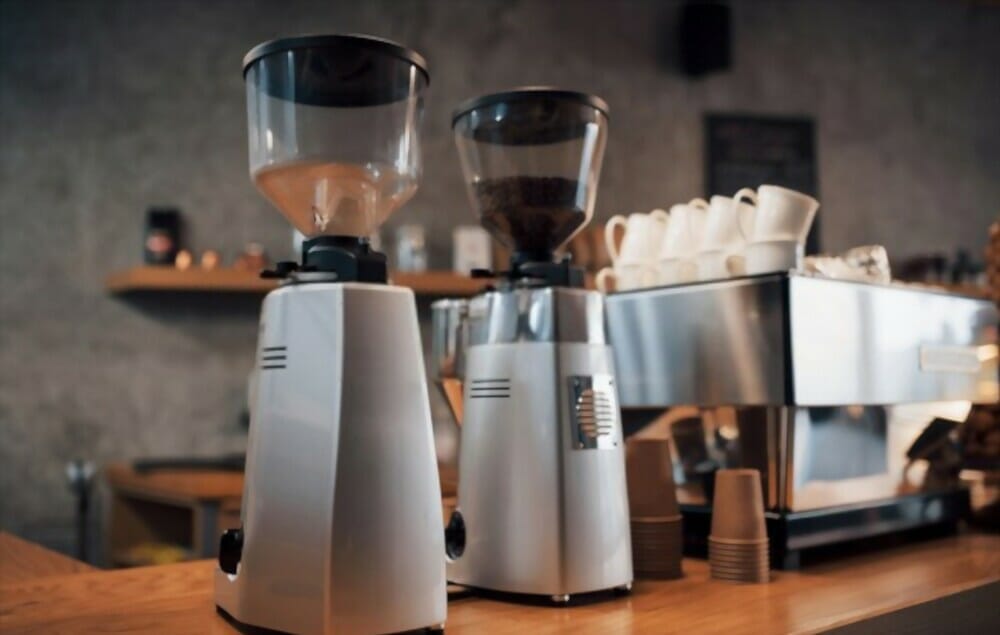
Run a finely ground shot of espresso beans through your electric grinder into the filter compartment (there’s a small window that you can see into).
Ground coffee is more easily trapped in the filter. The grind should be fine but not espresso level fine, if its too fine water will not go through it and can cause leaks.
This will also ensure that you only get a good shot of espresso without any residue.
Be sure to use acceptable grounds rather than coarse ones. The coarse ground coffee beans tend to seep through and make your coffee bitter, so it’s best to have fine grounds if you want a smooth cup of espresso that has a great taste and texture.
Step 3. Add Water
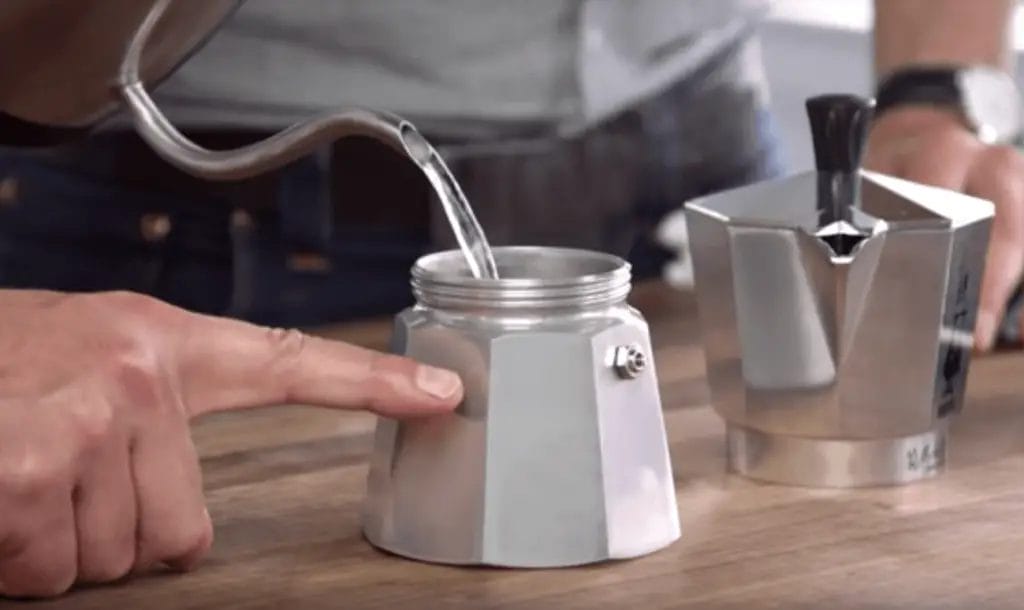
When preparing an espresso, fill the lower part of your stovetop coffee maker chamber with cold, filtered water. Make sure that you don’t fill past the safety valve.
Step 4. Add The Coffee Grounds
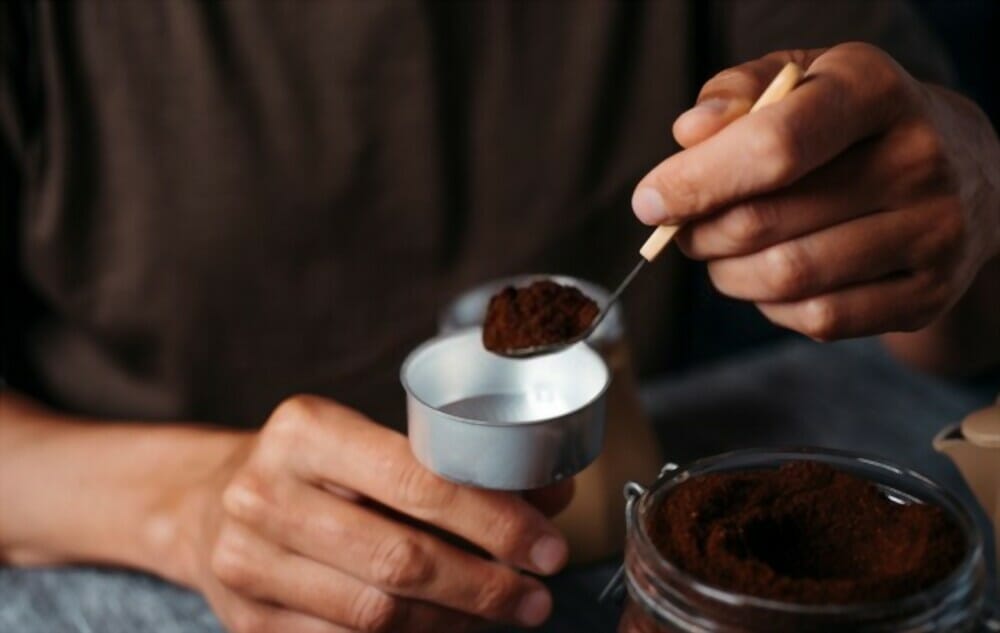
Fill the basket to the top with the coffee grounds. Make sure it's full! This is an important step. Underfilling might cause issues with the coffee's flavor and brewing.
Step 5. Reassemble The Unit
You're ready to make your Moka coffee! In order to reassemble your stovetop espresso maker, you should follow the directions.
First, you need to put the filter back in the water-filled lower part of the unit. Then screw on the top part tightly.
Note: Threaded metal devices don't need to be too tight. Additional pressure might not be necessary because these devices come equipped with a gasket. Ensure that it is firmly tightened and head on to the next step!
Step 6. Add Heat!
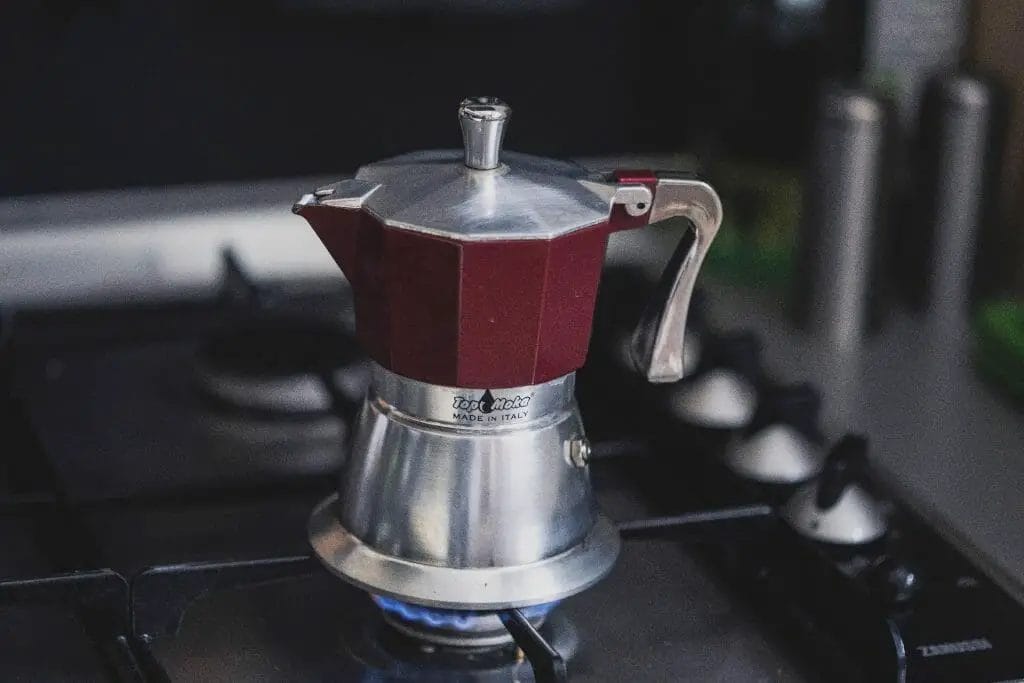
To make coffee, place the Stovetop maker on the stove and turn it on. Then, wait for it to boil. This process is quite quick as most units are usually small.
Don't wander off because you need to be present when the pot starts to boil. Be careful that your stove doesn't melt the handle with a gas stove.
Step 7. Serve And Enjoy

A gurgling sound signifies that water has reached the upper chamber and has been mixed with coffee grounds. When the pot starts to gurgle, lift it off the heat and pour!
NOTE: Don't let the coffee remain on the burner once the gurgling sound starts. The main risk of making the espresso this way is that it would give a burnt taste due to overheating during brewing.
What Is A ‘Moka Pot’?
Let's talk about Stovetop espresso makers or Moka pots. You see, they're a lot like espresso
machines in some ways but not all the ways.
It’s essential to understand these differences because stovetop espresso makers are so satisfying and always a favorite on camping trips and sitting by the fireplaces at your Grandma’s house.
A stovetop coffee maker is just a Moka pot. Gasp! Say it isn't true!
Moka coffee is similar to espresso. While it’s similar, it doesn’t have the same taste as espresso made with a traditional espresso machine.
The main difference is that the water used to brew Moka coffee is not forced through the grounds at as high pressure as it would be in an espresso machine. You can still get a nice, rich cup of coffee (yay!) but without the crema, if you use a stovetop espresso maker.
You also ought to be aware that there are other variations too, stay focussed on this segment!
Let me explain more about this.
You see, when you make a coffee with an espresso maker – whether it be stovetop or others – you’re making coffee in a pot that just kind of looks like an espresso machine, we’ll call it a “Moka Pot” (it means “coffee pot”).
A Moka pot is different than an espresso machine. It works by using the principle of pressure to push water through the coffee, which creates all sorts of exciting changes to make your coffee taste excellent.
The Moka pot has been around since the early 1900s, about 100 years ago. It was invented in Italy and is a very traditional way to make coffee there. It’s truly a part of Italian culture. How wonderful! Hopefully, you too will find it enjoyable. I certainly do!
While we are using the term "Moka pot" here, many people call your stovetop espresso maker a "stovetop coffee maker." I'll use the terms interchangeably.
Coffee Percolator
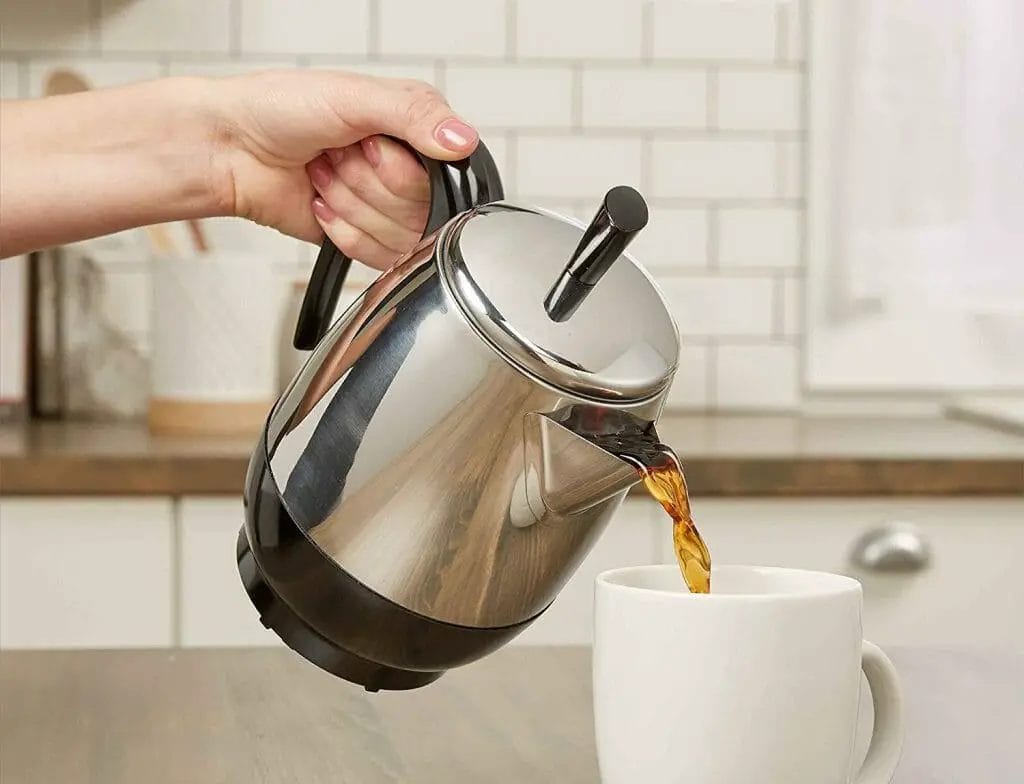
Another kind of stovetop espresso makers is a percolator. A percolator is famous for being an affordable way to have great coffee every time, all in one pot. It’s a pretty popular choice.
One reason that percolators are great for camping is that the coffee brew time isn't too long. That means you don't have to wait too long to enjoy your beverage.
So, if you want to brew coffee, but you don’t have a stovetop espresso maker – or at least, one that is small enough to fit on your camping stove – the percolator could be a good choice for you!
What to Know about Stovetop Espresso Makers

Let’s go over some things that you need to know about these devices, shall we? As I mentioned earlier, your stovetop espresso maker is called a “Moka pot” or “percolator,” an old way of making coffee. It is an Italian invention and was patented in 1933 by Alfonso Bialetti.
The name "Moka pot" comes from the Italian word "Mocca," which means "pipe" or "pipe maker." It's also known as stove-top espresso maker
As I mentioned, that’s really its actual name – but it is also known in Italy as a macchinetta or piccolo espresso!
These devises have been around in many forms since the early 1900s. The version that we know today was patented in 1933 by Alfonso Bialetti.
Mr. Bialetti brought the idea of an espresso maker to Italy, which is how we got our stovetop espresso makers!
The Moka pot is a great coffee maker for camping and tailgating because it’s small enough to fit in a pot cozy, it’s not cold when you get into it, and it takes up minimal room in your camper. It’s also effortless to use and makes fantastic coffee.
Several different types of stovetop espresso makers (like percolators) are available, even though most people refer to Moka pots as just plain stovetop espresso makers.
Material: Aluminum vs. Stainless Steel
Which metal is generally preferred, stainless steel or aluminum?
Stainless steel is more expensive, but they are durable and lasts longer than aluminum.
Stainless steel makes an uncommonly attractive Moka pot, and it heats quickly as well, so be mindful of your hand.
Aluminum is a cheaper metal that might not look as good as stainless steel. But this also means aluminum pots cost less to buy. Aluminum conducts heat more slowly, so you are less inclined to get burned.
However, stainless steel is probably best. Moka pots are inexpensive anyway, so investing in a more substantial and higher quality metal is well worth it.
How to Clean a Stovetop Espresso Maker?
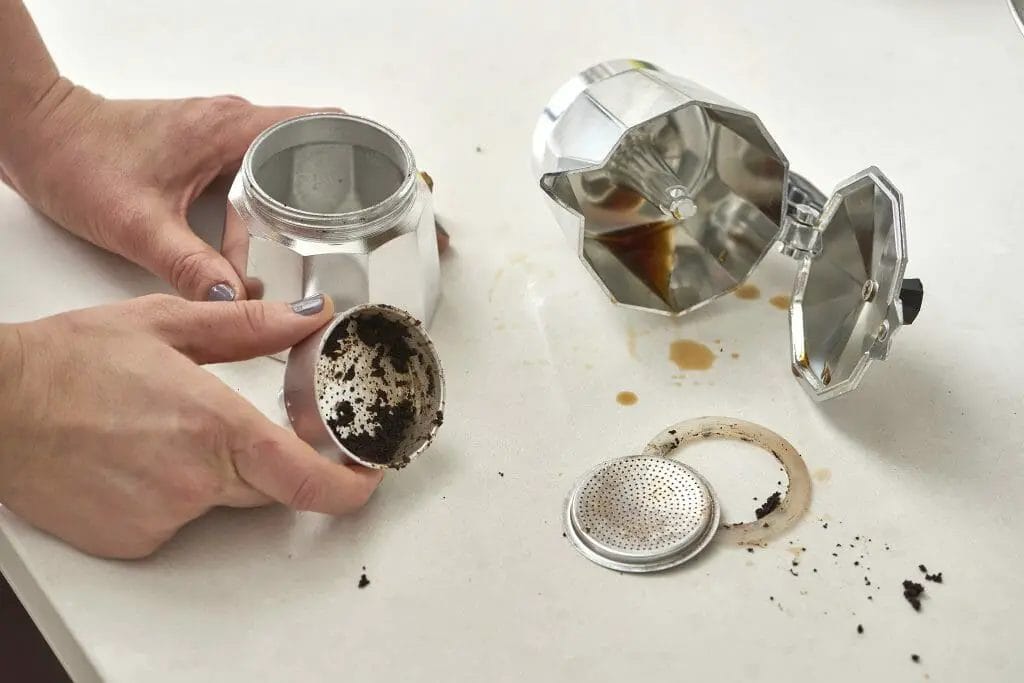
Cleaning your stovetop espresso maker is easy. Moka pots are durable, but they need to be treated with care.
It’s essential to keep in mind the quality of the finish and the future flavor of your coffee when cleaning a stovetop espresso maker.
Nonetheless, the cleanup is uncomplicated and carefree.
Avoid putting a Moka pot in the dishwasher, as this will ruin the finish. To clean, take apart the Moka maker, wash and rinse it with warm water, then dry it.
No soap is necessary or desirable since soap can contrast the taste of coffee.
Using harsh scrub brushes or sponges on the pot's outsides may be dangerous since they could remove the pot's finish. After a few weeks, the oils from the coffee will start to coat the pot.
If you own a stovetop coffee maker for over a decade, it may be time to replace the safety valve in the lower chamber.
To minimize risk, this should be tightened and not too old. A worn safety valve could be dangerous as these coffee makers use pressurized steam.
Tips for Making Perfect Stovetop Espresso
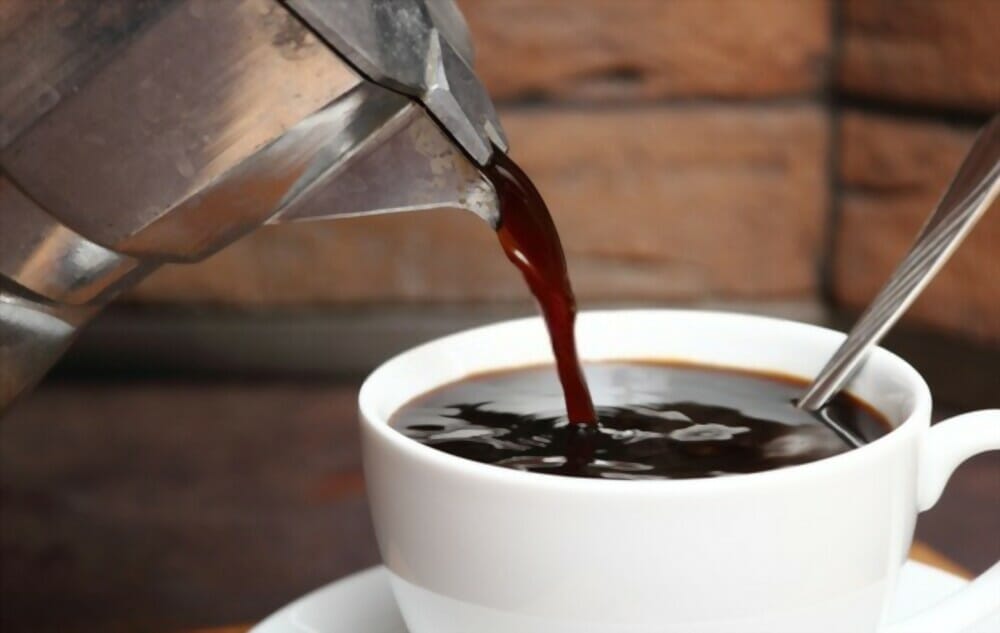
Many people get frustrated with the coffee they make, which doesn’t always have to be the case. Few tips for making excellent coffee using moka pots are:
- Get the right pot: Moka pots come in different shapes and sizes, but one important thing to notice is the quality of the potting material. It would help if you had something that has some heft to it, but not so much that it will absorb too much water and create a negative experience.
- Grind: The coffee should be ground very fine, but not as fine as an espresso. You should make sure that all components have been separated, and then they should be evenly distributed throughout the grounds.
- Fully Fill The Filter Basket: It is essential to fill the filter entirely with ground coffee. If you don’t completely fill the filter, the coffee will run through without proper extraction.
- It then produces an under-extracted coffee. A Moka pot is a pressurized brewing method. Without the resistance of the coffee, it won’t brew to its full potential flavor.
- Don’t Tamp the Coffee Ground: You will hear many people saying this, but it is crucial not to tamp the coffee grounds down. When you do this, you are essentially forcing the water through the grounds too quickly, leading to burning. Moka pots are not used for high-pressure brewing.
stovetop espresso maker – common problems:

Most problems that people have with their stovetop espresso makers usually arise from the following areas:
*Leaks: This can be caused by the gasket, which is the most common area where leaks occur. If you notice that your coffee pot leaks, then it may be time to replace it.
- Doesn’t hold water: If you have a stovetop espresso maker that doesn’t hold water, then it might be time to replace it. Another possibility is that a venting ball or gasket needs replacing.
- Doesn’t heat: If your stovetop espresso maker does not heat up properly, then it may be time to replace it. Another possibility is that there is a problem with the heating element.
Is Moka coffee as strong as espresso?
It’s as strong as espresso and has the same amount of caffeine. Unlike espresso, though, it takes a bit longer to make.
Can you make a latte with a moka pot?
Yes, you can. You can make a latte with the right ingredients and a stovetop espresso maker.
Can moka pot explode?
Moka Pots can explode if they build up pressure without release. This can happen if the water level gets too low, or if there’s a problem with the safety valve.
Is it better to use hot or cold water in moka pot?
Water should be hot, but not so hot as to be scalding. You may want to fill the reservoir after a few minutes to gauge your coffee’s temperature.
Can I use milk instead of water in moka pot?
No, you can’t. You will clog the brewer and end up with a mouthful of gritty coffee grounds and milk.
Can you make less coffee in a moka pot?
Yes, you can. You can fill the pot halfway with water and also half the grounds to make less coffee.
Can you reuse coffee in moka pot?
You cannot reuse coffee grounds from moka pot. They are used up after making just one cup of coffee.
FAQs
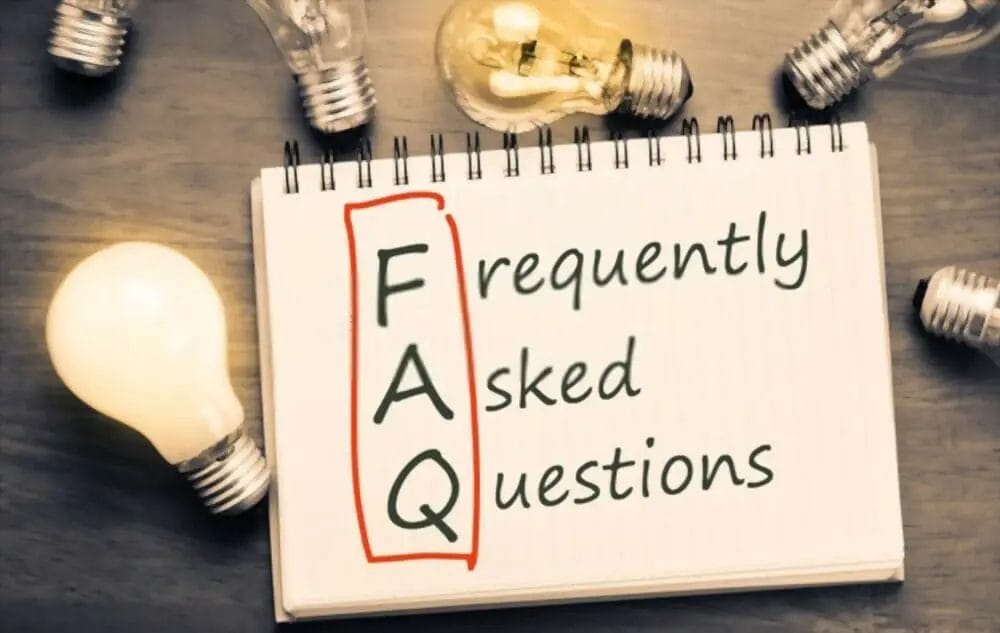
How long does it take to make a stove-top espresso?
Moka pots take around 5 minutes to make coffee, but it takes about ten to fifteen minutes for prep and grinding. Don’t forget to blow off the coffee maker’s dust and spillage after every use..
What’s the difference between stovetop espresso and Bialetti coffee?
Bialetti is a brand that’s famous for its stovetop espresso makers. Stovetop espresso makers are all different, but they all make a great cup of coffee.
The Bialetti Moka pot was the most recognizable model in the early 20th century. It’s made with aluminum and stainless steel and has earned its reputation for excellence.
Are stovetop espresso makers dangerous?
No, they’re not dangerous. The device does use pressurized steam. It has a safety valve, so you can’t get burned by any hot liquid or steam.
What is the best stovetop coffee maker?
It depends on what you’re looking for, Bialetti stovetop espresso maker is perfect as a quite coffee machine.
This model was one of the first-ever aluminum models for making stovetop espresso. It’s made with aluminum and stainless steel and has been a mainstay for years because of its ease of use, reliability, and quality.
This might be one of the oldest brand of coffee makers around today. The Bialetti Moka Express is striking, easy to clean, and durable. It lasts long. The difference between a cheap and good stovetop espresso maker is vast. Choose yours carefully.
Final Thoughts

Stovetop espresso makers can be a great coffee maker to have if you are going camping, to the beach, or on vacation.
It's not your traditional drip coffee maker. Instead, it makes a more unadorned cup of coffee that's made with potable water and locally roasted whole beans.
Once you get a taste of the difference in quality, you’ll never go back to brewed coffee again!
Using this device also allows you to experience the full flavor of the beans. It’s also very affordable, makes a great coffee cup, and is easy to use.
Hopefully, this article should have made it clear by now on how the stovetop espresso maker works.
Although there are many shapes and sizes and are made from different materials, all are intended to make the classic Italian Moka coffee taste.
The Moka pot is perhaps one of the most widely recognized stovetop espresso makers in the world. The Italians have been using them for years. It's tough to go wrong with the Moka pot.
What is there not to love? These devices are simple to operate and work reliably well.

